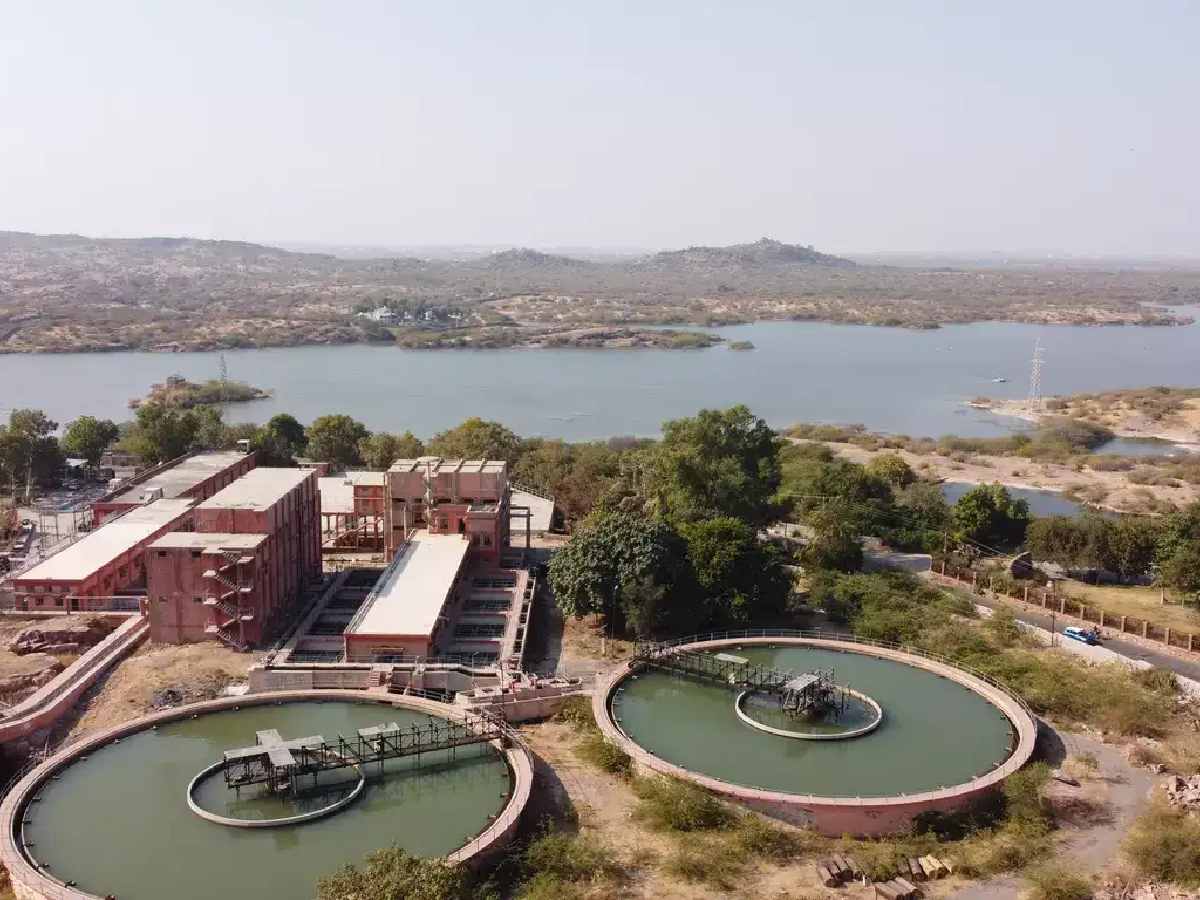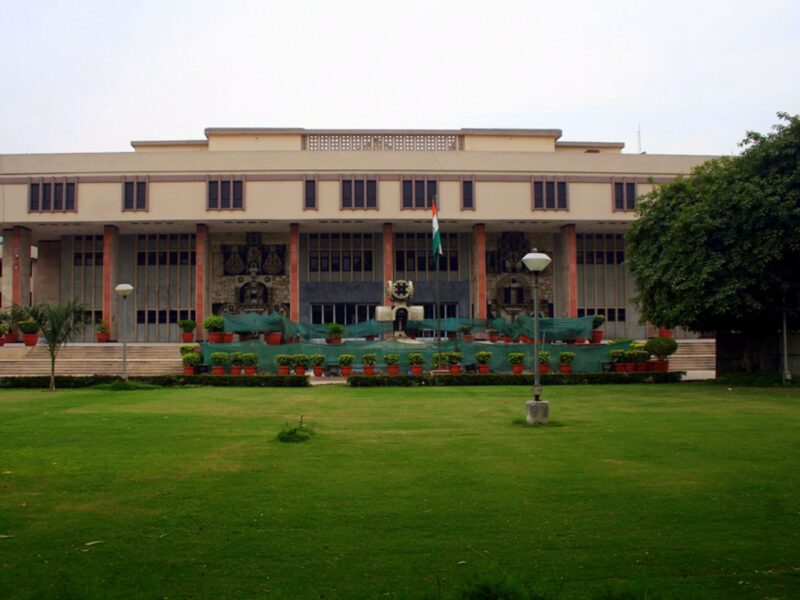Days after the Delhi Jal Board (DJB) released a detailed action plan to curb the discharge of untreated sewage into the Yamuna, environmentalists have criticised the proposal as “unreasonable” and “illogical.” They argue that installing sewage treatment plants (STPs) at the mouths of major drains would render existing STPs irrelevant and contravene environmental guidelines.
Activists claim that the DJB cannot construct STPs at the mouths of major drains such as the Shahdara and Najafgarh, as these locations fall within the Yamuna floodplain—an area where construction is prohibited under directives issued by the National Green Tribunal (NGT).
Speaking to Patriot, environmentalist Pankaj Kumar, founder of Earth Warrior—a volunteer group that cleans the Yamuna ghats in Delhi—said officials are not even assessing the feasibility of their plan.
Notably, according to the Yamuna Rejuvenation Report dated February 2025, Delhi has a combined installed sewage treatment capacity of about 764 million gallons per day (MGD). However, only 611 MGD is currently being treated by existing STPs. Meanwhile, the city generates around 792 MGD of sewage, resulting in a clear shortfall in treatment capacity.
Kumar added that most of Delhi’s STPs, along with decentralised STPs (DSTPs), have already been constructed, and sites for upcoming DSTPs have been pre-identified.
Also read: Delhi: Man held for duping investors of over Rs 48 lakh via fake trading app
“The DJB’s plan to build more STPs is totally illogical and a complete waste of the exchequer’s money,” said Kumar.
He cited the Delhi Pollution Control Committee’s report on Yamuna rejuvenation, noting that the Najafgarh and Shahdara drains cannot be tapped at their mouths due to their massive size.
“Together, these two drains carry nearly 75% of Delhi’s total wastewater. The Najafgarh drain handles a flow of approximately 450 MGD, while the Shahdara drain carries around 150 MGD,” he said.
Constructing new STPs is also a time-consuming and complex undertaking, Kumar pointed out. “Delhi’s largest STP—also the biggest in Asia—is located in Okhla and has a capacity of 124 MGD. It took seven years to complete. To trap the Najafgarh drain alone, the DJB would need to build an STP at its mouth with three times Okhla’s capacity. That is practically unfeasible and unrealistic.”
“Small drains can be managed, but trapping large drains at their mouths is not feasible,” he reiterated.
“What the DJB is doing is neither scientific nor logical,” Kumar added.
Experts warn of legal and environmental violations
Bhim Singh Rawat, Associate Coordinator at the South Asia Network on Dams, Rivers & People (SANDRP), echoed the concerns. He warned that building STPs on floodplains would lead to encroachment, further shrinking the already diminished riverbed.
“The decentralised STPs and tapping of drains are essential works and should have started long back. However, STPs must not be built in the river floodplain. Doing so would not only amount to encroachment of the already shrinking floodplain but would also expose the structures to flood damage, rendering them defunct,” he said.
Rawat added that STPs already exist at the mouths of some drains along the western bank of the Yamuna, such as at ISBT and the Indraprastha metro station, but these have not been effective in reducing pollution.
Failures of existing infrastructure raise accountability concerns
“So, the key question remains—how to make the STP system functional, accountable, and transparent. There are also STPs discharging treated sewage water back into the same drains, which defeats the very purpose of cleaning the river,” Rawat said.
He further pointed out that the actual sewage and wastewater generation in Delhi is grossly underestimated, leading to failed river-cleaning efforts. “The government has yet to form a policy for the reuse of treated wastewater and has not put in place the required infrastructure. Tapping and diverting effluents from drains to selected STPs may negatively impact their functioning. So, the success of the plan will depend on several factors and must be supplemented with missing links,” he added.
DJB’s drain action plan
In a significant move to clean the Yamuna, the DJB has launched a detailed action plan to prevent untreated sewage from entering the river, focusing on intercepting key drains.
According to DJB officials, dedicated teams have been assigned to inspect major drains and submit regular updates to Delhi’s water minister, Parvesh Verma. These reports will help identify interventions required to block sewage outflows.
Currently, a substantial portion of Delhi’s sewage continues to flow into the Yamuna untreated. To address this, the DJB is working to intercept 11 of the city’s 22 main drains, with work underway to cover two more. Plans involve setting up both STPs and decentralised STPs (DSTPs) at several drain outlets.
Each drain has its own strategy. For example, at Abul Fazal Enclave, once unlinked sewer lines are isolated, the flow will be reassessed. If sewage is still present, a trap will divert it to the Okhla STP.
A similar approach is planned for the Jaitpur drain, which receives waste from NTPC, Ali Gaon, Madanpur Khadar, and parts of Jaitpur. A new sewerage network will route the flow to the Okhla treatment facility, with an STP also proposed at the drain’s mouth.
The Mori Gate drain will have an STP installed at its outlet to treat waste before it reaches the floodplain. DJB has been instructed to complete these major drain-tapping projects by June 2027, with the minister issuing strict directives to prevent delays.
Also read: Delhi govt reduces local area fund for MLAs to Rs 5 crore
In the case of sub-drains feeding into the Najafgarh and Shahdara drains, the DJB plans to install STPs or DSTPs at their mouths to intercept sewage before it enters the larger watercourses.
At the Shastri Park drain, around 1,200 household sewer connections will be added to the existing network, supported by a DSTP to prevent untreated discharge into the river. A similar plan is being implemented for the Kailash Nagar drain, which discharges about 2.5 MGD of sewage. Homes in the area will be connected to the sewer system, and a DSTP will treat the waste.
At Delhi Gate, the DJB has proposed replacing the current 2.2 MGD STP with a larger 15 MGD facility. Additionally, 40 DSTPs are being planned across North, North-West, West, South-West, and South districts, aimed at serving more than 400 unauthorised colonies and over 100 villages.
Of these 40 DSTPs, 13 will receive funding under the central government’s AMRUT 2.0 scheme, with tenders expected to be floated this month. The remaining 27 DSTPs have already been approved, with the tender process set to begin by month’s end.





